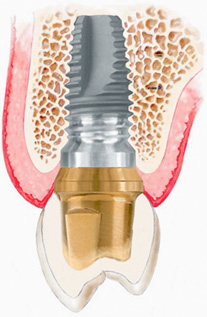Dental implants are one of the most common procedures in modern dentistry, but they are not exactly new. The issue of replacing teeth with artificial implants is very old indeed, with methods changing enormously over a lengthy history. From stones, to shells, to replacements harvested from unwilling and unknowing philanthropists, dental implants have served us for upwards of five millennia.
The earliest examples have been discovered through fossil records. Early examples of dental implants, constructed of shell and stone, have been found in the jaws of mummified prehistoric men of Egyptian and Phoenician origin. Remarkably, the shell teeth were found to have actually adhered to the jawbone, in some cases – an issue that plagued this practice until very recently.
More recently, animal and human donations begin to fill the proverbial, and literal, voids. Dogs and wolves were utilised for some, but it was the bloody battlefields of the Napoleonic Wars that provided many of the more stylish citizens in need of teeth. In fact, the use of the teeth of dead soldiers became somewhat of a fashion statement.
More recently, the tooth itself has been replaced by durable metallic, and later ceramic, replacements, while the mount has made use of a metal with a unique property. It was discovered that titanium, unlike other metals, actually encourages the bone to grow around the screw. This allows for a far stronger mount, and as a result, a tooth that will last far longer. It also ensures that the jawbone will not deteriorate over time.
This practice has come a long way. For more information on dental implants, contact the experts at National Periodontics, today.
